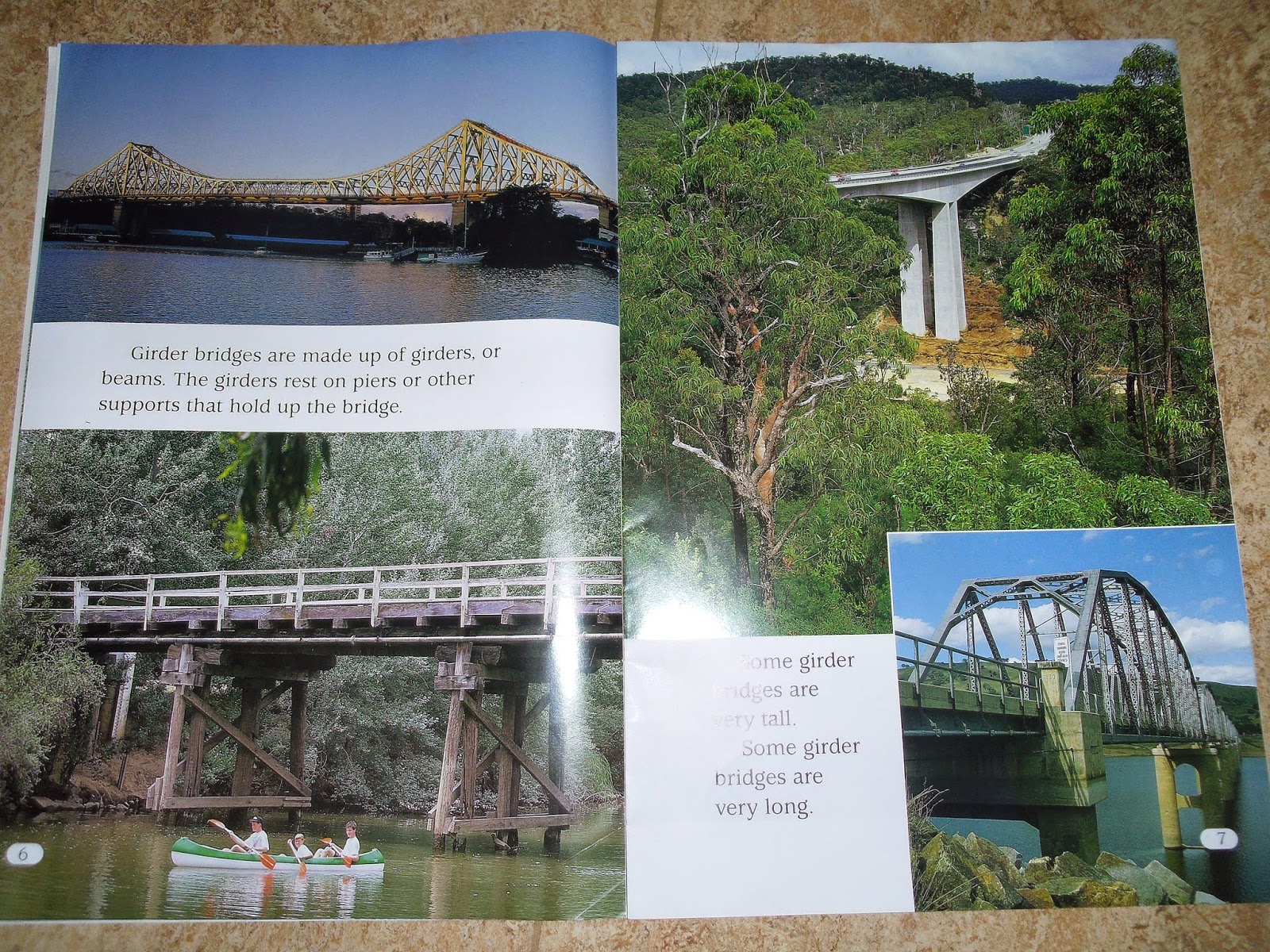We read a really interesting book this morning.
It is called "The Three Billy Goat's Gruff".
In this story the goats have to cross a bridge to get to the really delicious grass.
We started talking all about bridges....what are they made from, why are they used, what shapes are in bridges, how can bridges be made really strong.
We did an experiment to see what kind of paper bridge is strongest.
We tried just one sheet of paper. It could hold only 2 or 3 bears.
The sheet of paper was much stronger when we folded the sides. This bridge could hold 6 bears.
The bridge with an arch was a little stronger again and held 7 bears.
The best bridge was one which had been folded like a fan.
These are the bridges in order from the worst bridge to the best bridge.
We read a wonderful book about the different kinds of bridges: girder bridges, cantilever bridges, bridges with arches, suspension bridges and bridges that can rise to let boats pass underneath.
We went for a walk around our school to find a bridge.
We found a great arched railway bridge on the way to Ballyloughane beach.
We looked at the arched railway bridge and we could see semicircular arches and signs that were rectangular, circular, rectangular and triangular.
We particularly enjoyed standing in the tunnel made by the arched bridge listening the echoes we made with our voices.
We can't wait to begin designing our own bridges next week.
We can't wait to begin designing our own bridges next week.

































































